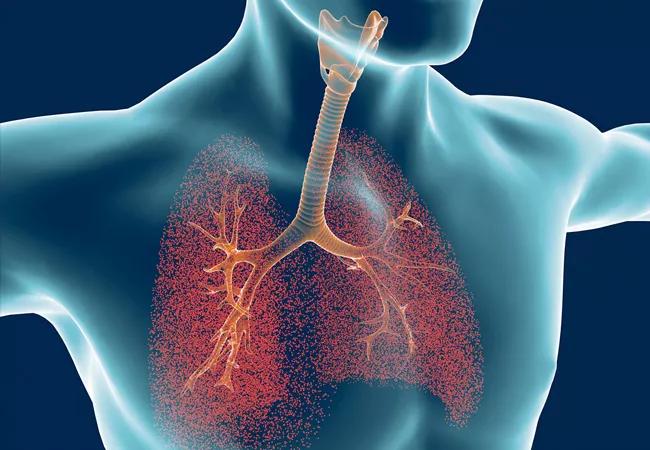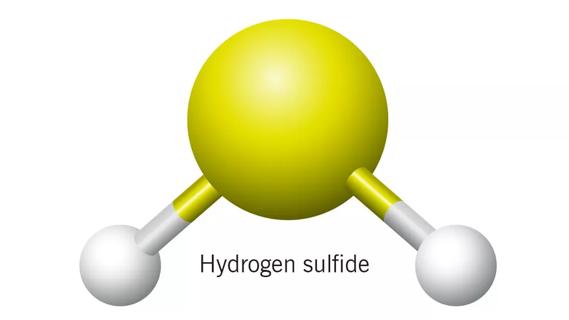Understanding the role of nitric oxide and hyaluronan in asthma

Nitric oxide (NO) is a biomarker of airway inflammation in asthma and an indicator of progressing disease. Studies have shown that asthmatics with high levels of exhaled NO have greater airway inflammation and airway reactivity. However, very little is known about the potential role of NO in driving airway inflammation.
Cleveland Clinic is a non-profit academic medical center. Advertising on our site helps support our mission. We do not endorse non-Cleveland Clinic products or services. Policy
In their latest study published in the July 2018 issue of PLOS One, Mark A. Aronica, MD, from Cleveland Clinic’s Department of Allergy and Clinical Immunology, and his team of collaborators investigated the association between NO-modulated hyaluronan (HA) production and inflammation in asthma.
“Hyaluronan is a linear glycosaminoglycan found in pulmonary secretions and the airway extracellular matrix of patients with asthma,” says Dr. Aronica. “It was first described in the secretions of asthmatics in the 1970s, but subsequent to that very little work was done on understanding its role in asthma, until more recently.
“Our study was prompted by an earlier observation that airway smooth muscle cells (SMCs) produce HA cables. We wanted to investigate whether NO, which is prevalent in asthma, might have an impact on its production.”
Dr. Aronica and his team utilized airway SMCs isolated from wild type and hyaluronan synthase knockout mice to test their hypothesis. They chose to do their experiments on SMCs because of their established clinical relevance in asthma.
“SMCs have been known to play an important role in asthma,” he says. “The airway in humans is surrounded by smooth muscle, and smooth muscle was the primary therapeutic target in asthma back in the 1950s with the use of bronchodilators. In addition, SMCs are easily accessible for research purposes.”
Treatment of SMCs isolated from wild type mice with the NO donor (500 mM NOC-18) resulted in the deposition of long, cable-like structures of HA. When these stimulated SMC cultures were incubated with fluorescently labeled leukocytes, leukocyte binding occurred. The binding was reversible upon treatment with hyaluronidase, indicating that HA-containing structures facilitate leukocyte adhesion after stimulation with NO.
Dr. Aronica explains that these findings bring us a step closer to understanding the mechanism behind chronic airway inflammation in asthma and point to non-immune cells as potential drivers of inflammation. However, further research is warranted.
“Our study is a piece of the bigger puzzle that aims to understand the role of NO and HA in asthma,” he says. “These early findings open up a myriad of additional questions that still need to be answered: Is HA harmful or beneficial? Are there ways we can impact HA production and what impact does it have in the pathogenesis of asthma? Does HA have an impact on airway remodeling?”
In an effort to tackle some of these questions, Dr. Aronica plans to continue his studies in knockout mice lacking the gene that encodes HA synthase — the enzyme responsible for HA synthesis.
“One of the findings of our study was that HAS2 knockout mice do not produce HA cables,” he says. “The HAS2 knockout mice are embryonic lethal, so we are now continuing our work on conditional HAS2 knockout mice to better understand how the lack of HA synthase, or the lack of HA production in the lung, might impact the overall disease.”

Large-scale joint study links elevated TMAO blood levels and chronic kidney disease risk over time

Investigators are developing a deep learning model to predict health outcomes in ICUs.

International collaboration is most genetically diverse study of the disease to date

Preclinical work promises large-scale data with minimal bias to inform development of clinical tests

Cleveland Clinic researchers pursue answers on basic science and clinical fronts

Study suggests sex-specific pathways show potential for sex-specific therapeutic approaches

Cleveland Clinic launches Quantum Innovation Catalyzer Program to help start-up companies access advanced research technology

Research project aims to pinpoint biomarkers that could speed diagnosis